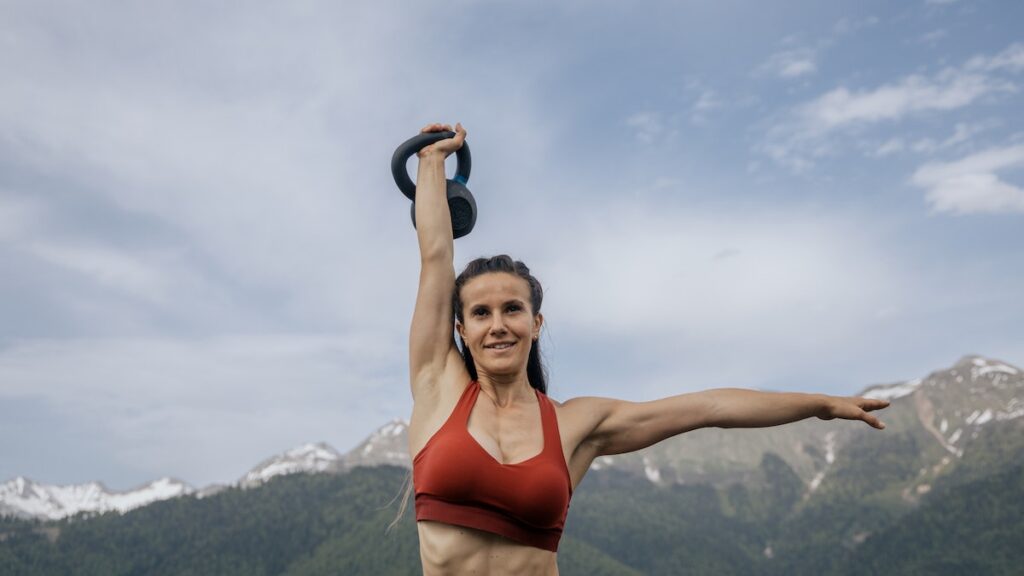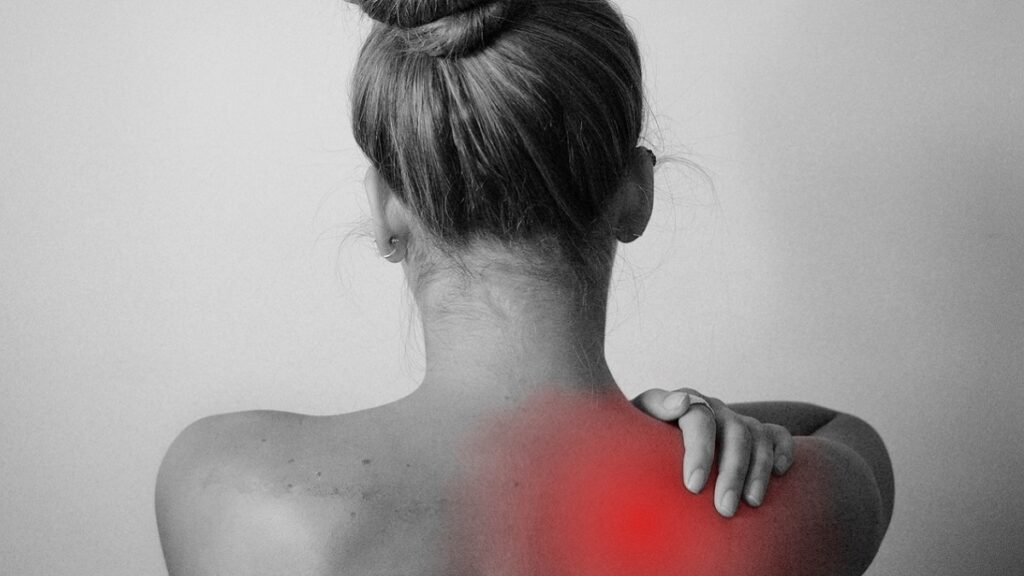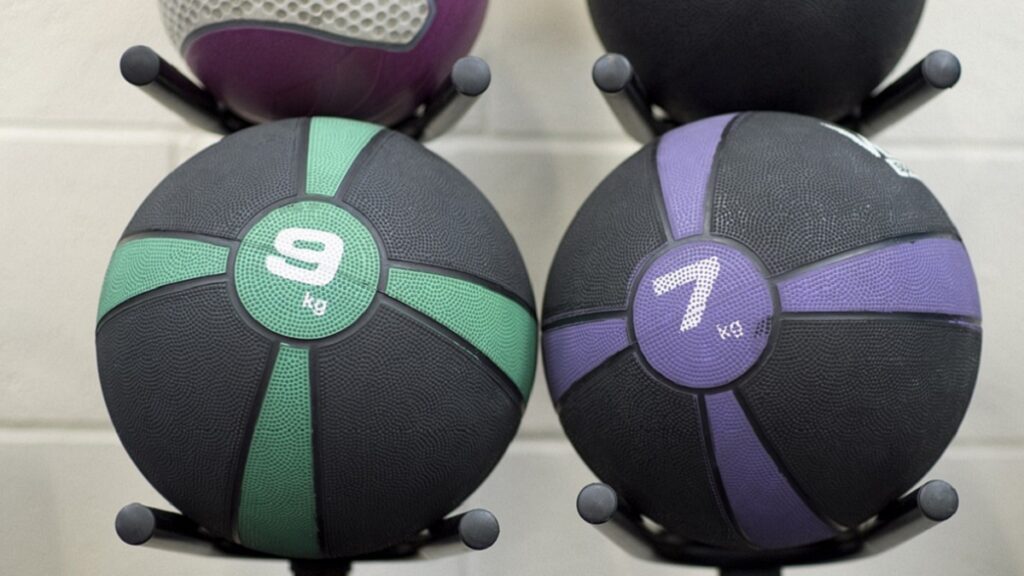One of the exercises you should consider when you want to work your body muscles in the comfort of your home is the kettlebell overhead press. The overhead press variation is ideal for adequately working your entire body: It strengthens the upper body, the core, and the lower body. Which are the kettlebell overhead press muscles worked?
The kettlebell overhead press work various muscles, including the shoulder, chest, core, hams, and glutes. The exercise activates these muscles causing them to transfer some strength in your whole body. It gives more benefits than the standard barbell option.
Our article aims to expound on the muscles worked during the kettlebell overhead press exercise, the workout’s proper form, helpful tips, and more. Let’s dive in.
Which Are The Kettlebell Overhead Press Muscles Worked?
The kettlebell overhead press is a full-body movement that works various muscles in different parts of your body, including the following:
- Serratus anterior
- Rotator cuff
- Upper chest
- Upper back
- Hamstrings
- Forearm
- Deltoids
- Triceps
- Glutes
- Core
Read on as we look at each of the Kettlebell overhead press beneficiaries.
1. Serratus Anterior
The serratus anterior or ‘boxer’s muscle’ is a wedge-shaped chest muscle originating from your chest’s side from the 1st to the 8th or 9th ribs on the upper part.
It extends along the scapula and pectoral muscles and is easily accessible between the latissimus dorsi and pectoralis major muscles. Also, it’s subdivided into inferior (near the inferior angle), intermediate (along the medial border), and superior (near the superior angle), depending on the insertion point.
Moreover, the muscle is responsible for punching movements. It works with other muscle groups to ensure stability in every rep.
2. Rotator Cuff
A rotator cuff is a group of shoulder muscle groups responsible for a wide range of movements and ensuring glenohumeral joint stability. The kettlebell overhead press muscles worked consist of the supraspinatus, subscapularis, teres minor, and infraspinatus muscles. Each of the muscles has independent roles as outlined below:
- Supraspinatus: Abduction of the arm
- Subscapularis: Internal (medial) rotation of the shoulder
- Infraspinatus: External (lateral) rotation of the shoulder
- Teres Minor: External (lateral) rotation of the shoulder
The muscles can be evaluated independently according to their specific movements during physical examination.
3. Upper Chest
The muscles of your upper chest comprise the sternal pectoralis major (lower pectoralis) and clavicular pectoralis major (upper pectoralis). The muscles are visually striking, giving your desired upper body posture.
Additionally, the pectoralis facilitate the upper arm’s inward rotation and contribute to shoulder joint flexion, upper arm adduction, and shoulder depression. Doing kettlebell overhead the correct way can promote your performance and appearance.
4. Upper Back
The kettlebell overhead press muscles worked on the upper back include the trapezius (traps) and latissimus dorsi (lats). The traps are the upper back’s large muscles that resemble the trapezoids or diamonds. Further, the muscles are responsible for the shoulder blade (scapulae) movement.
The trapezoid connects to the skull’s occipital bone, the clavicle’s outer portion, and the scapular acromion process. On the other hand, lats help in the stretching and rotating of your arm and shoulders.
5. Hamstrings
Hamstrings are skeletal muscles located at the back of your thighs, from the hips, and inserted into the knee. Their tendons connect the muscles to the knees, pelvis, and lower leg. Also, the Hamstrings include the semimembranosus, semitendinosus, and biceps femoris muscles. They help you perform leg movements such as walking, squatting, and climbing stairs.
The main functions of these muscles include hip joint rotation and extending and knee joint bending.
6. Forearm
Wrist extensors and flexors are the forearm’s kettlebell overhead press muscles worked. The inherent function of the muscles is to enhance the forearm’s movement by supinating and pronating the wrist and fingers.
The external muscles flex and extend the hand’s digits. Also, the brachioradialis crosses the elbow joint (arm-wrist) to help flex your elbows. There are three anterior compartment muscle layers, including superficial, intermediate, and deep.
7. Deltoids
The deltoid or delt is a shoulder muscle connecting your arm to the body’s trunk. It helps in the movement of your arm in various directions. Also, the skeletal muscles stabilize and protect the shoulder joints.
Below is the structure of the delts:
- Posterior deltoids: The back/rear delts connect to the flat surface of the shoulder blades and enhance the backward movement of your arm.
- Lateral deltoids: Side delts connecting to the acromion (shoulder blade’s bony nob) help move your arms sideways, upward, and downward.
- Anterior deltoids: Front delts connect to your clavicle and help in the forward movement of your arms.
8. Triceps
Triceps brachii (triceps) are large three-headed kettlebell overhead press muscles worked on the back side of your upper arm. The muscle consists of a long, lateral, and medial head emanating from separate attachments on the scapula and humerus and inserts through a common tendon (ulna).
The muscle is a posterior muscle group of the arm and the only one of its kind spanning almost the whole length of the humerus. It’s primarily responsible for the elbow joint extension to straighten the forearm. Also, the long head facilitates the adduction and extension of the shoulder joint.
The triceps create an anatomical space traversed by neurovascular structures, making them an essential surgical landmark.
9. Glutes
The gluteal muscles (glutes) form the buttock area, consisting of the gluteus minimus, gluteus medius, and gluteus maximus. The most superficial and extensive of all is the gluteus maximus, making the most significant contribution to the shape and form of the hip and bulk area.
10. Core
The core is your body’s central part, and the kettlebell overhead press muscles worked include the stomach (abs), hips, lower back, and pelvis. The exercise creates harmony among the various constituents, improving stability and balance.
The primary muscles worked by the kettlebell overhead press are the deltoids, upper back, triceps, and serratus anterior. All the others are secondary beneficiaries.
How Do You Perform Kettlebell Overhead Press?
You perform kettlebell overhead press in various ways, including the standard standing single-arm option.
Below are the steps to follow:
- Grab a kettlebell with two hands and lift it to shoulder height on the right side.
- Fix the kettlebell’s handle on the right hand, horizontally across the palm (between your thumb and the last two knuckles) at a 45 degrees angle.
- Stand straight and tuck the tailbone (pelvis to be parallel to the floor).
- Pull your ribs downward, brace the core, and squeeze the glute.
- Look straight ahead with your neck in a neutral position and draw your shoulder back.
- ‘Screw’ your feet into the ground so that your feet feel arched, your glutes tightened, and abstention in your lower body.
- Tuck your elbow by your side with your forearm vertically positioned, your wrist aligned with the forearm, and the kettlebell on your chest’s front side — rack or starting position for all reps.
- Stretch the left hand away from the body, aligning it with the shoulder to create balance.
- Press the kettlebell overhead as you maintain the shoulder position (pulled down and back), the elbow away from your body, and the arm upward in an arching position.
- Rotate your wrist as the weight goes up so your palm faces forward and the arm locks out.
- Return the weight to the starting position as you squeeze your lat muscle.
- Repeat for the required reps and switch to the left side.
Tips:
- Maintain active and tight glutes and core throughout the exercise to prevent side or backward leaning or hunching forward.
- Always push straight up without moving your arm outwards to ensure safety and effective muscle building.
- Ensure proper thoracic spine and shoulder mobility to prevent injuries resulting from improper form.
- Keep your wrist straight and use a wrist guard to support the joint if necessary.
- Avoid using a bounce to speed up the movement, which can lead to improper form.
- Avoid arching your back: Have a flat back and neutral torso to the end.
- Always start the movement from the rack position and press straight up.
- Only use the weight that your strength can handle.
What Are the Benefits of Kettlebell Overhead Press?
The kettlebell overhead press muscles worked benefit from overhead press variation in the following ways:
- High core activation level: The workout activates the core muscles (enhancing stability) that maintain the posture and protects the spine. The more the activation, the more the disbursed energy and improved posture during the whole exercise.
- Increased range of movement: Since your arms stay almost the same plane, there’s more natural motion range and reduced injury potential.
- Minimal chances of injury: Maintaining a neutral wrist position is easier with a kettlebell overhead press than the dumbbell and barbell.
- Multiple variations: The exercise has a wide range of variations. The versatility gets rid of boredom and can accommodate almost everyone.
- Improved fitness: Conditions the upper body and shoulders.
- Enhanced strength: Increases strength in your body since it’s a full-body workout, improving the overhead strength for daily tasks.
- Increased cardio: Results from the heart working extra hard to pump blood up the raised hand.
Which Common Mistakes Should You Avoid When Performing Kettlebell Overhead Press?
Below are the common mistakes you should avoid when performing kettlebell overhead press:
- Incorrect wrist position: Avoid bending your wrist during the movement but keep it straight (neutral). The bending can indicate a hefty weight or your arm is starting to fatigue. As a result, your wrist can easily get injured.
- Inactive core: Since the exercise is a full-body workout, the core is part of the kettlebell overhead press muscles worked. Hence, failure to activate it ruins the outcome and eliminates the core gains, and leads to a lack of support during the exercise.
- Incorrect arm positioning: Poor arm positioning in the rack position may cause a lack of support during the movement. Hence, keep the arm straight with your elbow stacked underneath the wrist. Resultantly, the performance becomes easier, more powerful, and less risky.
- Inappropriate weight: A kettlebell that’s too heavy for your strength level has two problems: It makes it challenging to keep the correct form and can easily be hurt. Also, you’ll miss out on the workout’s full muscle-building benefits due to other muscles’ involvement.
- Wrong standing posture: Leaning on the opposite side (instead of straight upwards) while pressing is a big mistake common to many beginners. It occurs when pressing too heavily, forcing the arm out of your body alignment. Consequently, it can strain your shoulder joints.
- Momentum application: Avoid bending your knees and creating bounce to make the pressing easier by using momentum to push the weight up. That prevents the muscles from fully pressing the weight, and thus, they don’t reap maximum benefits from the movement.
Which Are the Kettlebell Overhead Press Variations?
Below are the kettlebell overhead press variations you can consider for a change from your regular single-arm option:
1. Seated Position
You can perform this exercise while sitting on a bench or the floor. The former enhances stability through your feet, while the latter is less stable but more advanced than the former.
Here are the bench-sitting option instructions:
- Sit on a bench at a height that positions your thighs parallel to the floor. The posture increases stability but removes the weight from the hips and hamstrings.
- Lift the weight to the rack position with both hands, stretch the other arm away from your body, and tighten your core.
- Press the weight straight up, similar to the regular kettlebell press.
- Lock out your arm, turn the wrist, and controllably lower the weight back to the rack position.
- Repeat for your set reps and switch to the other arm.
You can reduce your sitting height weekly as you gain experience until you comfortably do the workout while seated on the floor with your legs stretched out.
2. Half-Kneeling/Kneeling
The kettlebell overhead press muscles worked are the core muscles. The choice is ideal if you seek more activation of your core. On one or both knees, your legs can’t screw into the ground; consequently, your core activation heightens.
Here are the instructions:
- Kneel (fully or halfway) with your legs shoulder-width apart, and tuck your tailbone to prevent your spine from jutting at the bottom.
- Lift the kettlebell to the rack position with both hands and tighten the core and the glutes.
- Press normally (straight up), lock your elbow and turn the wrist.
- Slowly and controllably lower the weight to the starting position.
- Repeat for your desired reps and switch to the other side.
3. Double Arms
The pressing option involves concurrently performing your presses with both arms while seated, kneeling, or standing. Since the kettlebell racking happens simultaneously, use a weight that aligns with your strength.
Here are the instructions:
- Stand with your feet hip-width apart and soften your knees.
- Grab your kettlebells with both hands and lift them to the rack position. Ensure your elbow is right below your wrist.
- Tighten your core, press up with both arms simultaneously, and lock your elbows at the top.
- Slowly and controllably lower the weight back to the starting point.
- Repeat for your desired reps.
Tip: Avoid leaning too far back.
4. Bottom-up
The variation works your wrist balance and strength. However, it isn’t easy, and you should ensure you have strong wrists before you start.
Here are the instructions:
- Get into your standing position, flip the kettlebell upside down (the bottom facing the sky), and raise it to the rack position. The weight balances your grip and not resting on the wrist in this position.
- Press the weight straight up, and hold and lock the elbow at the movement’s top.
- Slowly and controllably lower the weight to the starting position as you keep your core and glutes tight.
- Repeat for the required reps and switch to the other arm.
FAQ
Does the Kettlebell Overhead Press Build Shoulders?
Yes, the kettlebell overhead press builds shoulders. The shoulders are among the primary kettlebell overhead press muscles worked. Hence, the exercise improves shoulder functionality and protects shoulder joints from injuries resulting from radical angles.
What is the Best-Starting Weight for the Kettlebell Press?
You should start the kettlebell press with a weight that aligns with your strength. Even so, identifying the appropriate weight can be challenging. However, we have an ideal range for beginners, including 26 lbs (12 kg) to 53 lbs (24 kg) and 18 lbs (8 kg) to -35 lbs (16 kg) for men and women, respectively.
Can You Do Shoulder Presses Every Day?
Yes, you can do overhead presses every day. However, you must use different variations and reps and keep your fatigue levels in check.
Also, you shouldn’t do the daily pressing for your long-term workouts.
Parting Shot
The overhead variation is full body exercise, and hence, there are various kettlebell overhead press muscles worked. They include the serratus anterior, rotator cuff, upper chest, upper back, hamstrings, forearm, deltoids, triceps, glutes, and core.
Even so, the workout emphasizes the upper body more than the other muscles. Hence, it’s ideal for good upper back and shoulder mobility, preventing lower back arching. Also, it’s an excellent consideration to stabilize your muscle before moving to more advanced pressing exercises.
Thankfully, we have provided the proper forms of the different kettlebell press variations you can include in your workout program.



